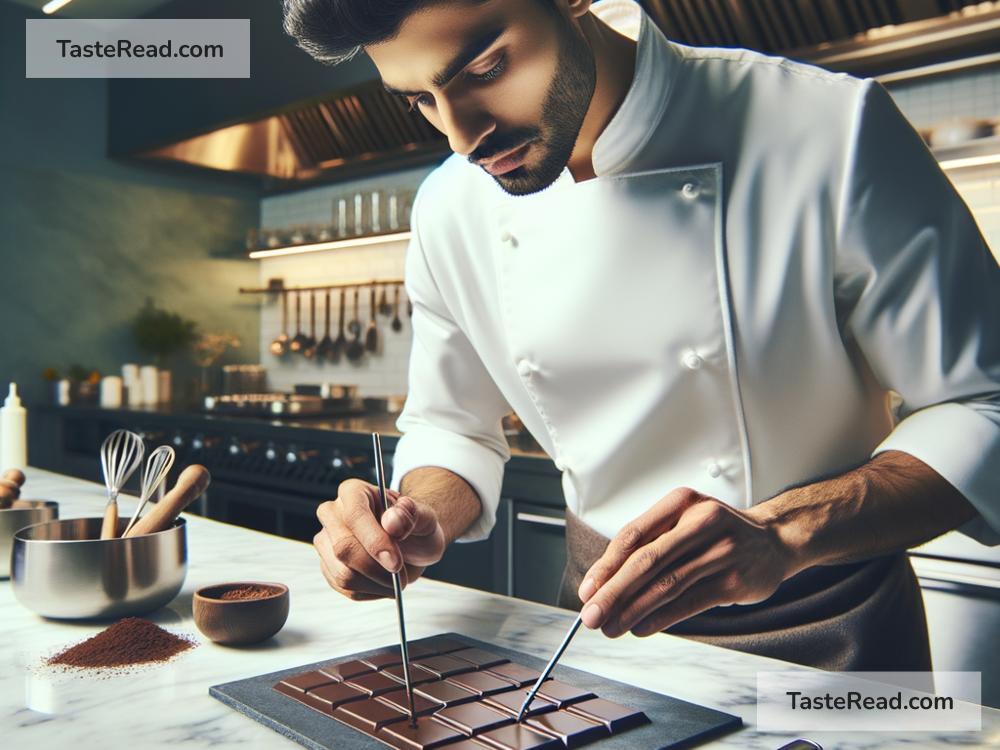Advanced Methods for Tempering Chocolate Like a Pro
Chocolate, a universal symbol of indulgence, love, and luxury, holds a special place in the hearts of many. Whether it’s the smooth, melt-in-your-mouth sensation or the rich, deep flavors, a well-tempered chocolate bar stands out. Tempering is a technique that involves heating and cooling chocolate to stabilize it for making candies and confections, giving it that satisfying snap and gloss. But how do you temper chocolate like a pro at home? Let’s dive into some advanced methods that are surprisingly simple to execute.
Understanding Tempering
Tempering chocolate might sound daunting, but it’s essentially about controlling the temperature to influence how the cocoa butter crystallizes. Properly tempered chocolate will have a shiny finish and a firm texture. It’s not just for aesthetic appeal; it also prevents the chocolate from melting easily when handled.
Why Advance Methods?
While traditional tempering techniques get the job done, advanced methods can offer more precision, consistency, and possibly save you some time. They are especially useful if you’re looking to elevate your chocolate creations to a professional level.
Advanced Tempering Methods
1. Seed Tempering
Seed tempering is an accessible method that incorporates tempered (solid) chocolate pieces into melted chocolate. Here’s how to do it:
- Melt: Gently melt two-thirds of your chocolate over a double boiler or in short bursts in the microwave, ensuring it doesn’t exceed 120°F (48°C) for dark chocolate, or 105°F (40°C) for milk and white chocolates.
- Seed: Remove from heat and add the remaining one-third of finely chopped chocolate to the melted chocolate, stirring continuously.
- Cool: Keep stirring until the temperature drops to about 82°F (28°C) for dark, or 80°F (27°C) for milk and white chocolates.
- Reheat Gently: Finally, reheat the chocolate to its working temperature (88-90°F for dark, 85-87°F for milk, and 82-84°F for white chocolate), ensuring it’s in the perfect condition for molding or coating.
2. Tabling Method
Tabling is a more traditional, yet advanced technique requiring a marble worktop. It involves pouring two-thirds of the melted chocolate onto the marble and moving it around with a palette knife.
- Spread and Agitate: Spread the chocolate over the surface to cool it down rapidly, constantly moving and agitating it with the knife.
- Combine: Once adequately cooled (you’ll notice it thickening), quickly scoop it back into the remaining warm chocolate, stirring continuously.
- Test: Keep stirring until it reaches the perfect working temperature, similar to the seed method.
This method demands a bit of skill and timing but is immensely rewarding with its professional-grade results.
3. Sous Vide Method
For those who love gadgets and preciseness, tempering chocolate sous vide is a game-changer. Here’s what you’ll need:
- Sealable Bags: Place your chopped chocolate in a sealable plastic bag.
- Water Bath: Set your sous vide machine to the desired temperature (115°F for dark, 110°F for milk and white chocolates).
- Circulate: Place the bag in the water bath, ensuring the chocolate is fully submerged, and leave it for about 15 minutes or until fully melted.
- Cool Down: Then, manually drop the temperature of your water bath to about 81°F for dark chocolate (or 79°F for milk and white), and let it sit for another 10-15 minutes.
- Final Heating: Lastly, increase the water temperature to the working temperature of the chocolate and let it sit for a few more minutes.
This method offers unparalleled temperature control, making it nearly foolproof.
Tips for Success
- Patience is Key: Tempering takes time and attention; rushing can lead to mistakes.
- Quality Matters: Use high-quality chocolate, as cheaper alternatives may not temper as well.
- Keep it Dry: Any contact with water can cause chocolate to seize, ruining the texture.
Wrap-Up
Tempering chocolate like a pro at home is completely achievable with the right methods and a bit of practice. Whether you’re a fan of the hands-on approach of seed tempering and tabling or prefer the precision of the sous vide technique, these advanced methods can elevate your chocolate creations beyond amateur confections. So don your chef’s hat, arm yourself with patience and precision, and transform your kitchen into a chocolate lover’s paradise. Happy tempering!


